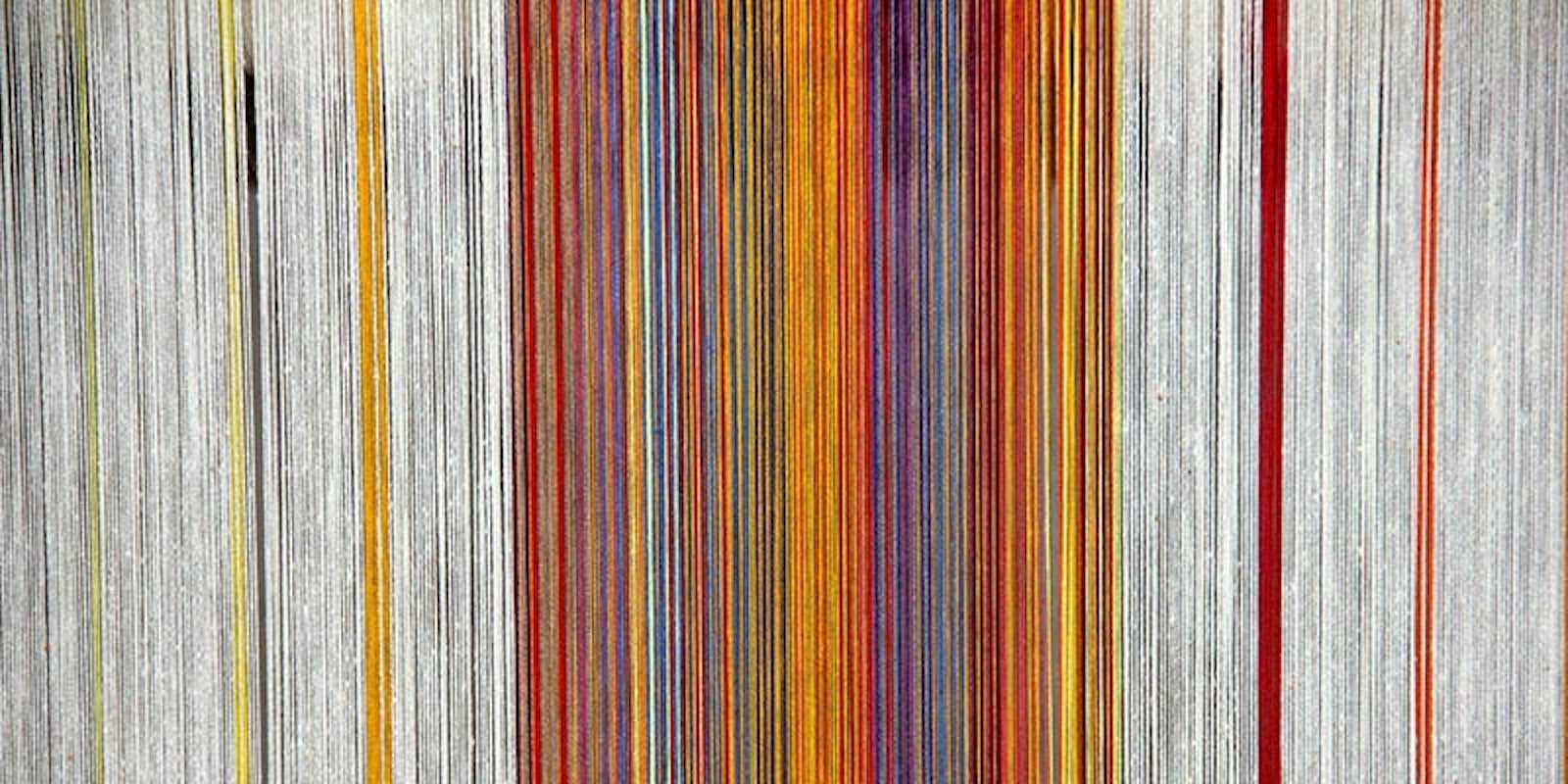Knitters use the expression "yarn chicken" to describe knitting a sweater without really knowing if they have enough yarn to complete it. I decided to adopt the phrase "warp chicken" for weavers. You have probably been playing it yourself without realizing it. If you don’t like playing warp chicken there are plenty of resources that to help you accurately plan your projects such as Weaving Made Easy for rigid-heddle weavers and The Weavers Companion for shaft-loom weavers.
Here are some examples of warp chicken I've played with a few of the outcomes:
Warped the loom for 3 towels, and then decided to weave 4 napkins instead. This required a whole new set of calculations regarding woven length, shrinkage, and hems. Success!
Forgot whether I put on a warp for one or two scarves. I also didn't know the intended length of the scarf (or scarves), and no clue on the fringe length. To compensate for my total lack of planning, I wove the first one with fringe on both ends and the second one as a möbius so that I didn't have to worry about fringe.
Used a tapestry needle to weave my final header. This was due to an ill-advised idea of sampling on the actual project's warp, cutting off, and then re-sleying. All that fooling around used much more warp than I had estimated. The back beam was pulled as far forward as possible and I could no longer get a shed wide enough for a shuttle.
Lash on to conserve warp and perhaps reduce warp chicken anxiety. Photo Credit: Susan E. Horton
Miscalculated the amount of warp needed for 4 placemats so ended up with 3 and a half. What do you do with 3 placemats, and what is a half-placemat?
Wove a shawl with a design that reversed in the middle and then worried through the second half that I wasn't going to be able to complete the design because I wasn’t sure of my warp length.
I'd like to say that these were one-time occurrences but in fact I have repeated some of them a few times with variations. Through the years, I've learned to often put on slightly more warp than I need. That helps me avoid that panicky feeling and sometimes yields enough fabric for a handbag from a scarf warp or a breadbasket napkin from a towel warp.
Weave well,
Susan


